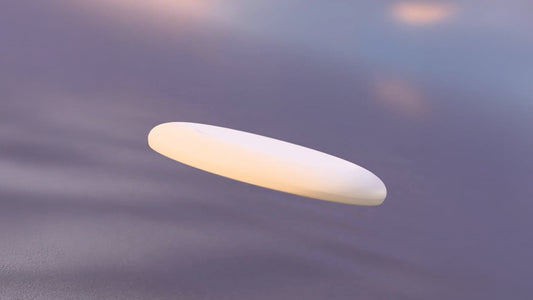Circular and sustainable design are becoming increasingly important as the world seeks to address the environmental challenges posed by our current “take-make-waste” linear economy. In this blog post, we chat with Balena’s CPO (Chief Product Officer), Yael Joyce Vantu, a trailblazer in the field of circular and sustainable fashion design, to learn more about her journey, her vision for the future and how her work at Balena is helping to pave the way towards a more circular and sustainable future.
Who is Yael and what is her background story?
Yael is a footwear and product designer, as well as a wife and a mother of two boys. Her passion for design and fashion began at a young age and led her to pursue a degree in Industrial design at Bezalel Academy. Following this, she went on to earn a Master’s Degree in luxury accessories and management in Milan, Italy, where she gained valuable experience in the luxury fashion industry working as a footwear designer for Roberto Cavalli. Aside from her work at Roberto Cavalli, Yael is currently an illustrator for other fashion brands such as Hermès, and a lecturer at Raffles Istituto di moda e design in Milan.
Today, Yael is proud to be the CPO and Head of Design at Balena, where she advises on the day-to-day implementation of the company's procurement and design strategy. Thanks to the wide network that Yael has built in Italy, Balena is able to partner and collaborate with various personnel across the supply chain to ensure successful execution across its procurement and design strategy.
Yael first connected with David (Balena’s CEO) in 2020, and since then have worked tirelessly to build Balena into what it is today. What started as a team of two has since grown to a large team of talented individuals who are as passionate about responsible materials and innovation. Yael has been a part of the incredible journey to develop and create the world's first material that is 100% compostable and biodegradable, and to be a part of a game-changing solution from the beginning she states “has been truly rewarding”.

Why and when did you first become interested in circularity and sustainable design practices?
My passion for sustainable and circular design was ignited by a personal dilemma I was facing with the fur industry. A colleague and I had been contemplating creating a fur bag strap, but I kept postponing the idea. This experience made me realise the big impact we as designers have on the final product, how critical material choices are and it solidified my determination to seek out more responsible alternatives. While I did not know the term for this type of design at the time and the true meaning of this experience, I recognised the profound impact that design decisions could have on the world and on the products we create. Sustainability was not always a popular or trendy topic, yet I knew it was essential to consider the long-term effects of our design decisions.
What is circular design and why is it at the heart of a regenerative future?
Circular design is an innovative approach to product design that aims to minimize waste, reduce resources use, and considers the entire lifecycle of a product, from its creation to its end-of-life. As the world becomes increasingly conscious of the need to address the environmental challenges of our current linear economy, circular design offers a more sustainable alternative. In my experience traditional design practices often prioritise short-term profitability and convenience over long-term sustainability. Circular design, on the other hand, emphasises the importance of considering the entire lifecycle of a product, from its creation to its end-of-life, which is the approach we take at Balena. As designers we need to think more holistically about products and consider the impacts they have on the environment, society and the economy. This mindset shift towards sustainability is critical to create a more circular future for generations to come.
How can a designer start a circular business model? What is the designer's role, within an organisation, in the transition from a linear to circular economy?
Designers play a critical role in the transition from a linear to a circular economy. As the creators of products, we have the power to design for durability, comfort and circularity. By working alongside suppliers and manufacturers, designers can identify sustainable materials and production methods and collaborate with other departments in the organisation to implement circular practices. A big part of this role requires research. Researching different materials and researching different design models.
Can you share some sneak peeks into what you have been working on recently?
Currently I am working on developing and creating the perfect solution for a biodegradable and compostable shoe. I am sampling and prototyping different types of designs here in Italy to offer these solutions to brands. Additionally, I am developing a centralised material database for our Balena materials. Our aim is to share our work and help make the fashion world a better place by incorporating circular materials and designs.
What would your key advice be for young designers starting out?
I would say I have two pieces of advice to offer. First, always be curious, and always continue researching and learning. As a lecturer, I enjoy learning from a new generation, staying updated on trends and being a part of interesting and insightful topics of discussion. Always keep an open mind and remain curious. Secondly, to be kind and genuine. Being a kind person will always take you a long way in career and in life!
 "
"


